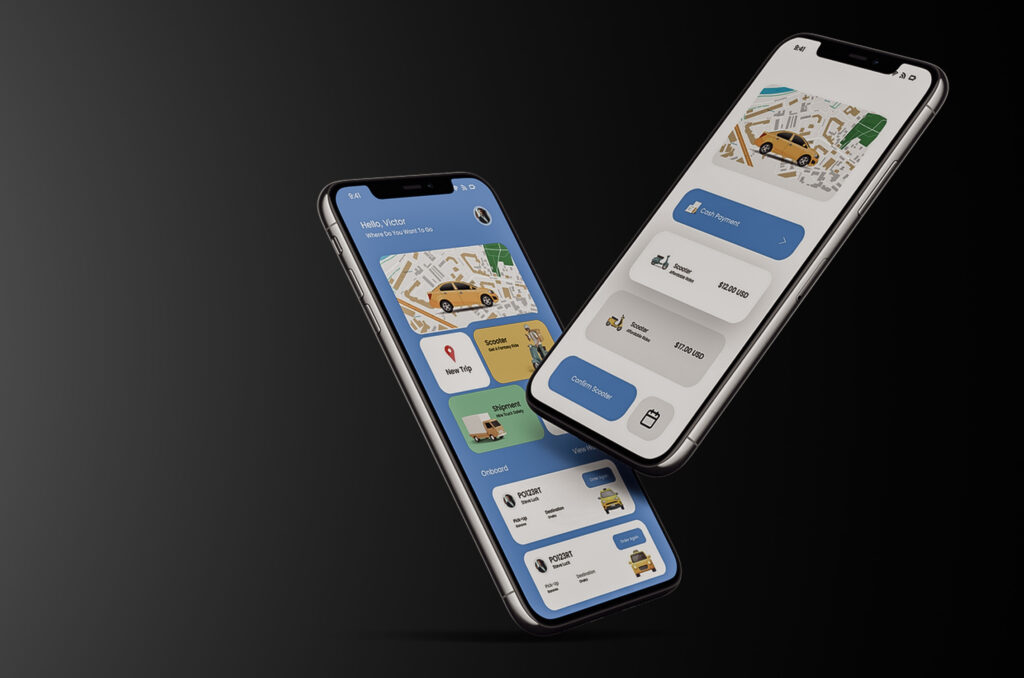Ride Surd - On-Demand Taxi Ride Hailing App

Overview
When I first joined the Ride Surd project, the goal was ambitious: build a ride-hailing platform that could compete with global players, but tailored for mid-sized cities with unique transportation dynamics. I knew this wasn’t just about matching drivers & riders, it was about trust, timing, & seamless mobility.
From the outset, I grounded the team in Scrum. We began with a discovery sprint to map out the rider & driver journeys, identify regulatory constraints, & define our MVP. I worked closely with stakeholders to prioritise features like real-time GPS tracking, dynamic pricing, & driver verification. Every sprint was a step toward a product that felt fast, safe, & reliable.
Technologies
To deliver a responsive & scalable experience, we leaned into a modern, mobile-first tech stack:
Mobile: Flutter for cross-platform development (iOS & Android)
Backend: Node.js with GraphQL for efficient data querying
Real-Time Services: Firebase & Socket.IO for live location updates & ride status
Mapping & Navigation: Google Maps API, Mapbox SDK
Payments: Stripe for in-app payments & driver payouts
Cloud Infrastructure: AWS (Lambda, S3, DynamoDB), Docker, Terraform
Project Tools: Jira for sprint tracking, Figma for UI prototyping, Miro for journey mapping
Team
I led a lean but high-performing team:
- 2 Mobile Developers
- 1 Backend Engineer
- 1 UI/UX Designer
- 1 QA Tester
- 1 DevOps Specialist
I facilitated sprint ceremonies, maintained the product backlog, & served as the bridge between business goals & technical execution. I also ran weekly stakeholder demos to keep alignment tight & feedback loops short.
Challenges
Integrating real-time tracking: One of the trickiest challenges was real-time location tracking. We needed to ensure that both riders & drivers could see accurate, low-latency updates without draining device batteries. I worked with the engineers to fine-tune our polling intervals & optimise our use of WebSockets.
Fostering platform credibility: Another challenge was trust. We had to build a system that made riders feel safe & drivers feel respected. That meant implementing robust identity verification, in-app SOS features, & a two-way rating system, all while keeping the UX clean & intuitive.
Uniqueness
I believe what set Ride Surd apart was its local-first mindset & thoughtful feature set:
- Smart driver allocation based on proximity, rating, & ride history
- In-app tipping & loyalty rewards for frequent riders
- A “quiet mode” for riders who prefer a silent trip
- Real-time fare estimates that adjusted to traffic conditions
Conclusion
After six sprints, we launched Ride Surd in two pilot cities, Kennewick & Spokane. Within the first month, we had over 5,000 rides completed & a 4.8-star average rating across both rider & driver apps.
For me, Ride Surd was more than a transportation app, it was a lesson in balancing speed with safety, & innovation with empathy. Scrum gave us the rhythm, but it was the team’s shared vision that made the project successful.
Project name :Ride Surd
Role : Product Owner
Industry : Ride Hailing
Methodology : scrum
